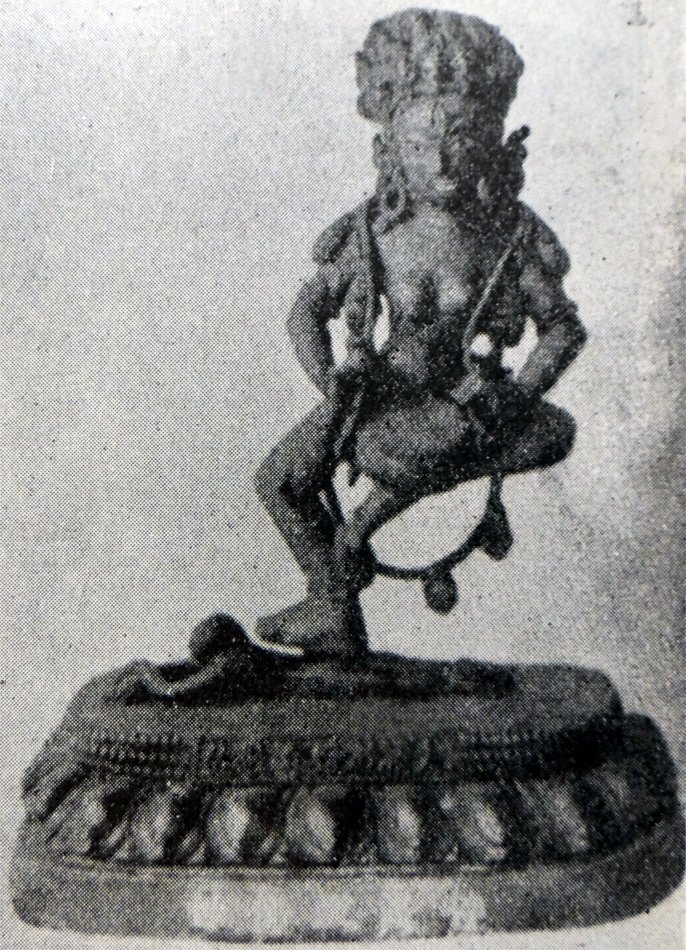The Indian Buddhist Iconography
by Benoytosh Bhattachacharyya | 1958 | 51,392 words | ISBN-10: 8173053138 | ISBN-13: 9788173053139
This page contains an iconography image of Musical Instruments Deities: Mukunda and represents figure 210 of the book Indian Buddhist Iconography, based on extracts of the Sadhanamala English translation. These plates and illustrations represent either photographs of sculptures or line-drawing reproductions of paintings or other representations of Buddhist artwork.
Figure 210 - Musical Instruments Deities: Mukundā

Fig. 210: Mukundā
(Peiping)
There is a further group of goddesses representing the four musical instruments and are often mentioned in the Sādhanas and Maṇḍalas as companions of important deities. When everything else is deified there is no reason why these musical instruments should not also be deified. These four Musical Instruments are named as Vaṃśā (flute) Vīṇā (violin), Mukundā (kettle-drum) and Murajā (drum) and we find them all deified with human form, colour, faces, hands and symbols. In the Vajraḍāka-maṇḍala they are collectively described as nude, violent in appearance, wearing garlands of skulls and severed heads and dancing in Pratyālīḍha. They display the different instruments as their special symbols. They [viz., Vīṇā] are described below in the same order in which they appear in the Pañcaḍāka-maṇḍala.
3. Mukundā:
Colour: white;
Arms: two;
Symbol: Mukunda instrument.
The third goddess in this series is the goddess Mukundā who plays on the instrument called the Mukunda. Her form is described thus in the Niṣpannayogāvalī: “Mukundā is white in colour. She plays on the instrument called the Mukunda with her two hands”. One statuette of Mukundā is found in the Chinese collection under the name of Mukundadharā, who is the same as Mukundā. This Chinese statuette is illustrated in Fig 210.
